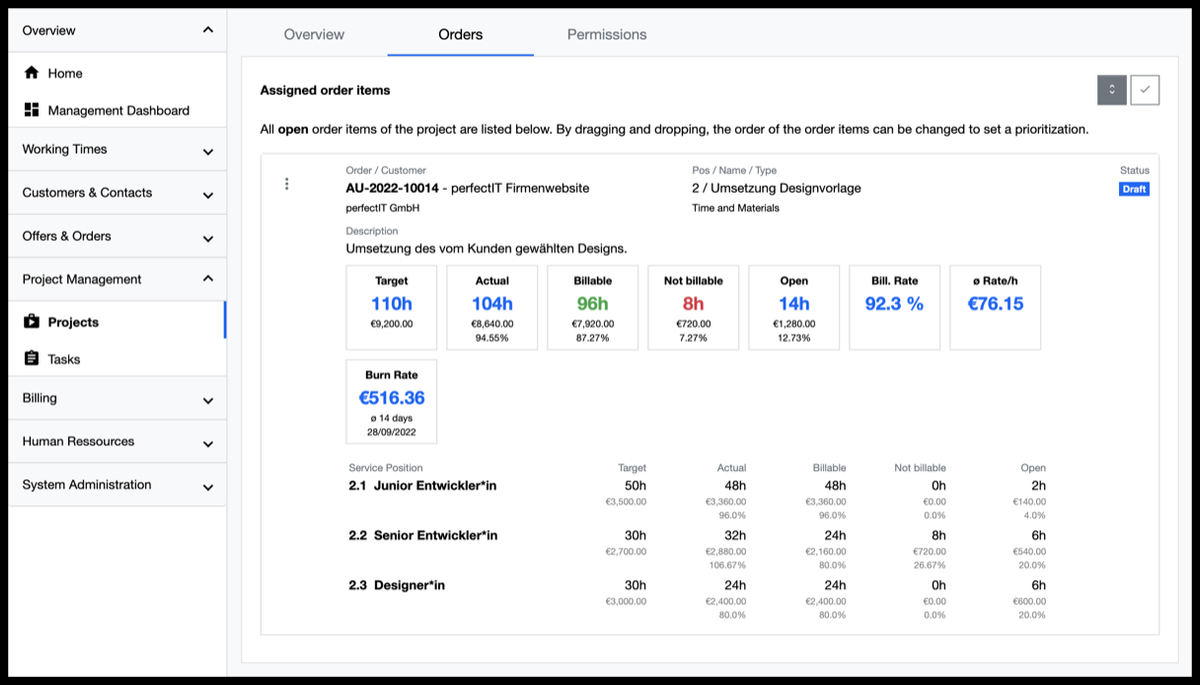Orders represent a business basis for cooperation between customers and service providers and usually describe the services to be provided by a contractor to a customer at a specified scope and price.
Order as a Basis
When providing the service, it is important for the customer that it takes place in the agreed time, in the defined scope and at the specified price. The contractor, in turn, strives to satisfy the customer and achieve the planned margin.
In practice, however, things happen that can jeopardize the achievement of these goals.
-
Estimates: At the time an order is created, effort estimates are made based on available information. Assumptions may have to be made, as not all details are known yet. Thus, the probability is high that the actual effort will differ from the effort described in the order in the end.
-
Completeness: When a customer defines the requirements, it is not always guaranteed at that time that everything has been thought of. Important aspects may come up later and are then missing in the description of the requirements in the order.
-
Priorities: Everything is constantly changing, including the importance of requirements that have already been assigned. A new, more important requirement is added, another must give way.
These points are intended to show that changes in the implementation of orders are quite normal. What is much more important is how you deal with them as a contractor and client.
Create Transparency
Many conflicts arise because changes and the resulting consequences were recognized or coordinated too late. To avoid this, it is important to identify problems and their causes as early as possible and to make them transparent.
Controlling on orders is already a good solution in foreknown for the account managers. But also project managers and employees should always have the reference to the customer order to participate more responsibly in the fulfillment.
For this reason, the assignment of orders was introduced in foreknown. An account manager can assign individual order items to different projects in coordination with the project managers concerned. Subsequently, the project managers can put all open order items of the project into an order sorted by importance for implementation.
With the start of the conversion, working time bookings flow against the order items and all key performance indicators (KPIs) can be viewed on the project per order item.

In this way, all project participants always have an overview of the status and progress of the order items and recognize at an early stage if an order item is getting out of hand.
Furthermore, requirements that the project team members will face during implementation can be more easily compared against the order items to support orderly change management.
Conclusion
By listing order items and associated KPIs on projects, we ensure that all project participants are aware of the business basis of a requirement, the order, and can track the progress of its implementation. This increases the sense of responsibility for successful fulfillment among all those involved and raises more awareness for problems.

